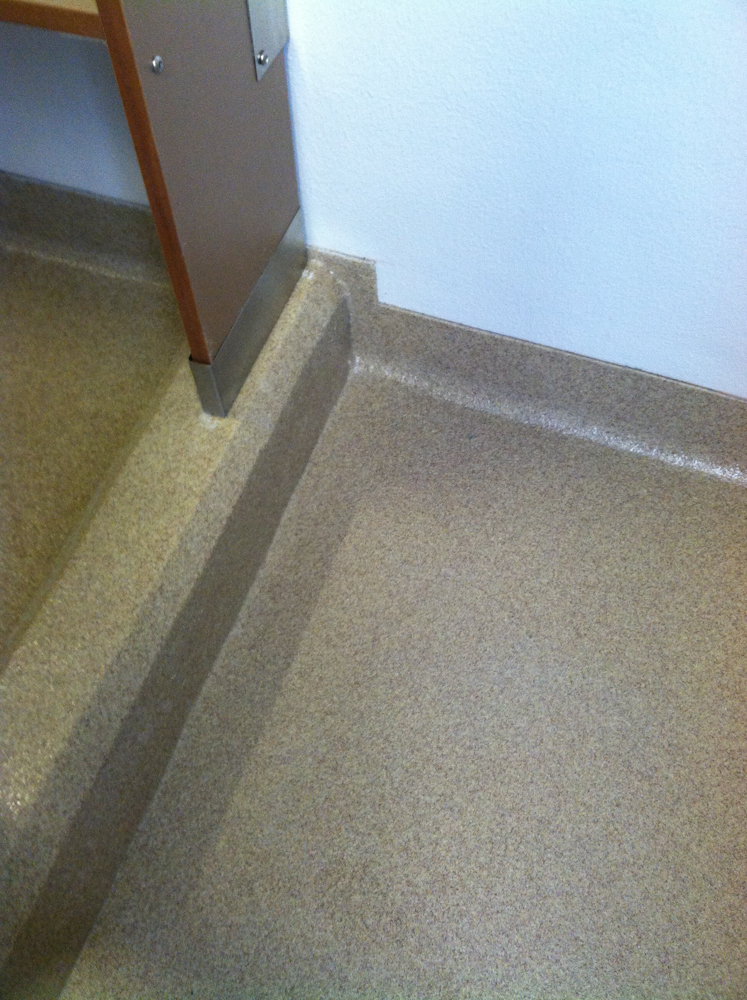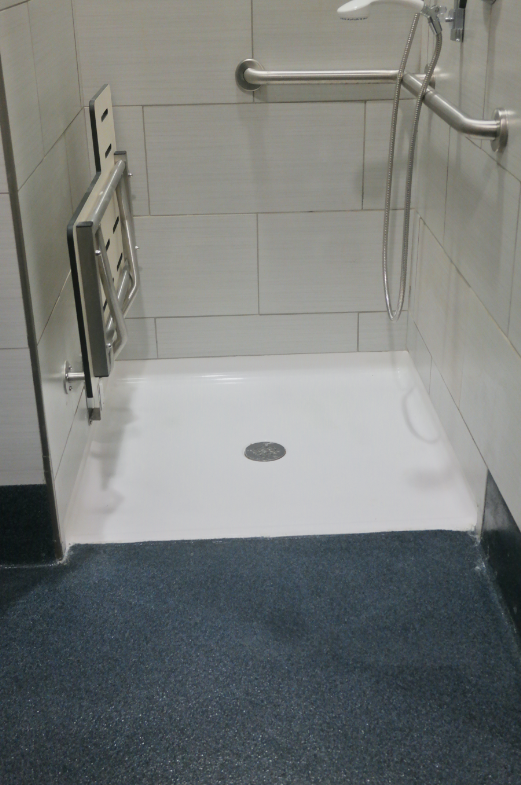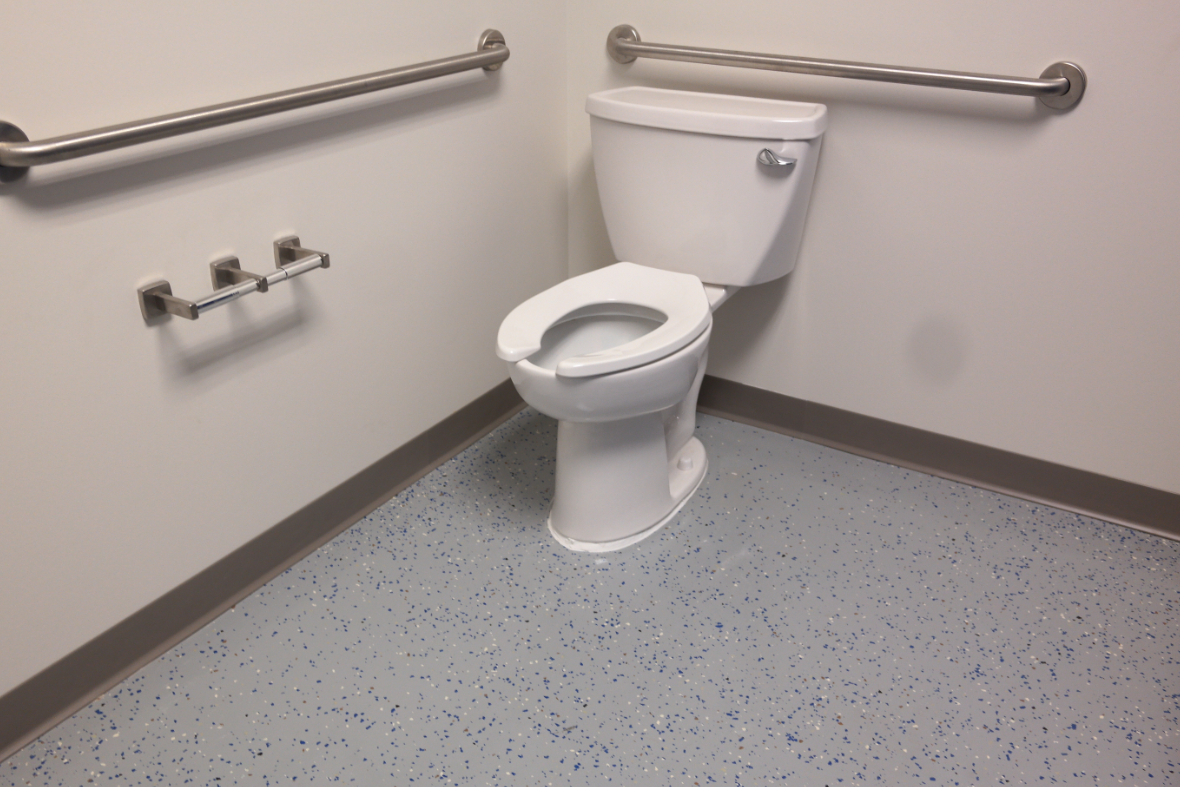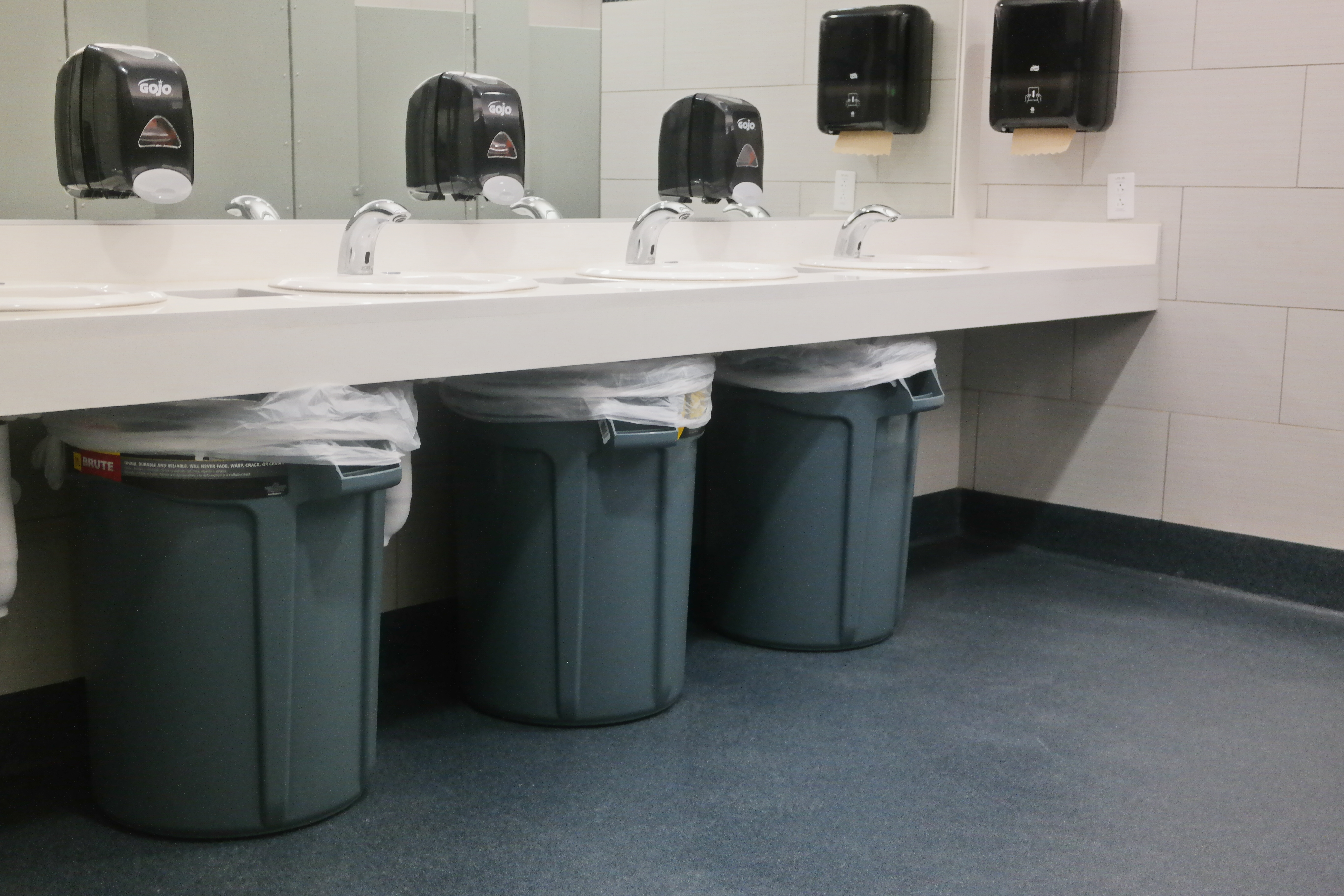It goes without saying that the floors in restrooms, especially those in schools and institutional environments, take a great deal of abuse. It is important that the flooring system be durable, easy to clean, slip-resistant and resist to the growth of the bacteria. Although job specifications may call for ceramic tile, epoxy is by far the better option for restroom floors.
Beneath the Surface

In the picture above, bacteria had seeped into the joints and underneath the tile, causing some of the tiles to come up out of the floor.
Perhaps the biggest weakness of ceramic tile is that it does not repel water. It absorbs water through the joints and into the substrate. Therefore, bacteria of all types can penetrate into the joints and erode not only the joints, but the thin set grout underneath. This makes for a very unsanitary environment, even if the ceramic tile on top looks clean. Eventually, the bacteria underneath the tile will contaminate the tile, and the tile will have to be removed.
Epoxy, on the other hand, is impervious. Nothing—not bacteria, water, urine or other bodily fluids—will absorb into the epoxy floor coating system.[dt_gap height=”5″ /]
Seamless Protection

With epoxy, the floor connects seamlessly to the wall with epoxy cove base, eliminating any lines where bacteria can grow.
Another advantage of epoxy is the fact that it is seamless. Ceramic tile has seams and grout lines that are hard to clean and can become breeding grounds for bacteria. With epoxy coating systems, the floor can continue up the wall with cove base, eliminating even more area for bacteria to grow. In addition, the lack of grout lines and joints makes epoxy much easier to clean than ceramic tile.[dt_gap height=”5″ /]
Durable in Harsh Environments

This quartz epoxy floor will provide many more benefits to this shower area vs. a ceramic tile floor
Epoxy resin floors are abrasion, chemical and impact resistant. This means that epoxy flooring that is properly installed will long outlast ceramic tile which is prone to chipping, cracking and discoloration.[dt_gap height=”5″ /]
A Safer Option

This quartz floor meets directly up to the shower line, providing added slip resistance when exiting the shower
One of the biggest disadvantages to installing ceramic tile in restrooms is that it is slippery. This can cause major safety hazards in an environment that is constantly exposed to water and other liquids. Epoxy floors provide slip-resistance with the addition of aggregate, something that smooth ceramic tile simply cannot offer.[dt_gap height=”5″ /]
Decorative Finish

A partial broadcast of a custom color chip blend gives this retail store’s bathroom floors a beautiful decorative finish!
Although many people may think that epoxy is an “industrial” flooring choice that isn’t very attractive, nothing could be further from the truth. With epoxy, you don’t have to give up aesthetics for functionality. Quartz or flakes can be added to epoxy, giving your restroom floors a beautiful finish.[dt_gap height=”5″ /]
[dt_divider style=”thin” /]
For more information about epoxy flooring options for restrooms, please e-mail us at office@plexi-chemie.com or call 904.693.8800.


Leave A Comment